It’s a Monkey’s Life
This is the 2019 Honda Monkey Bike—a motorcycle impossible not to have a good time on.
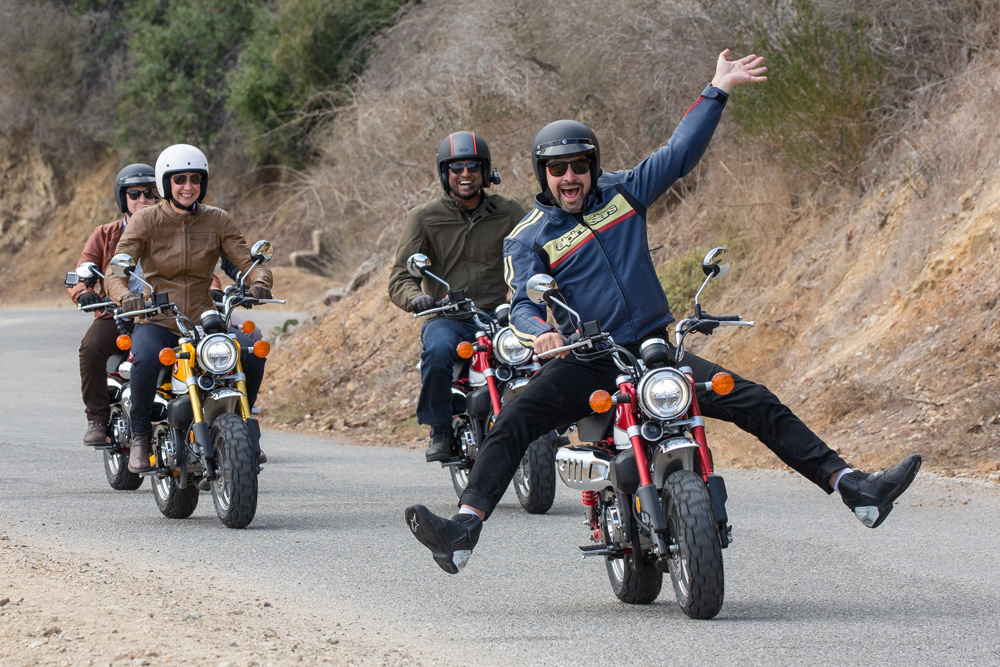
What’s the universal animal of mischief? If you’ve ever been a parent, or ever had contact with children under the age of 5, you’ll know it’s the monkey.
“Who’s a little cheeky monkey?”
Like a toddler, the monkey is playful, happy, super-energetic and always up for a good time, kinda like the bike you see before you.
The names “Monkey” and “Honda” are two of the most intrinsically linked in all of motorcycling. The Honda Monkey Bike of the 1960s is one of the pillars of the world’s largest and most successful motorcycle company. Along with the Super Cub, to many riders, the Monkey Bike is Honda. It’s one of motorcycling’s great ironies that a company so gigantically successful built a large part of its reputation on a motorcycle so small.
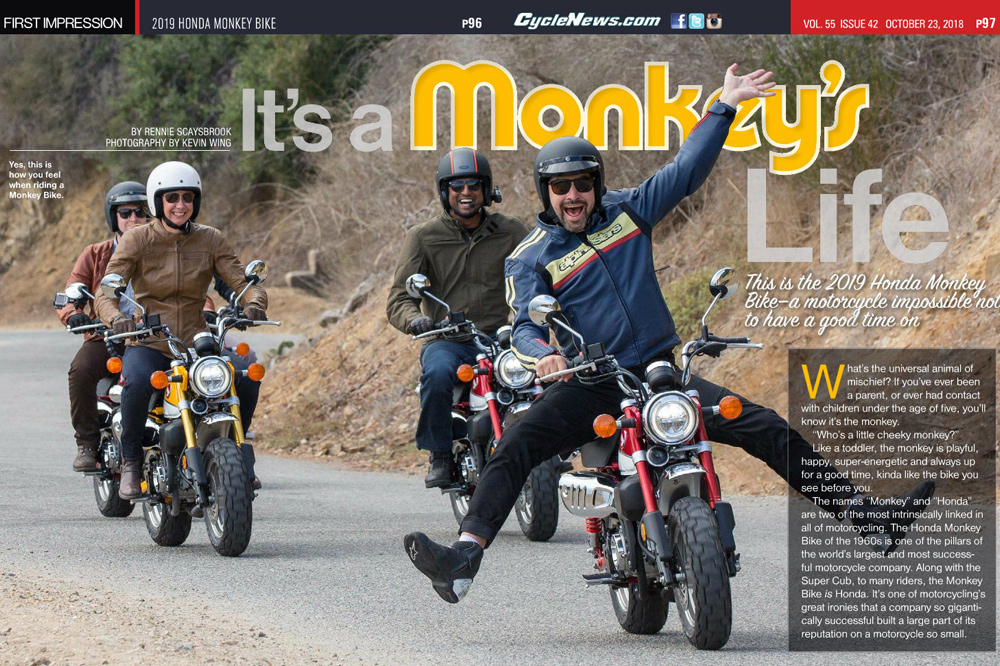
Click here to read this in the Cycle News Digital Edition Magazine.
Photography by Kevin Wing
The good news is, the Monkey Bike is back. Recrafted and repackaged for a new generation, the Monkey Bike aims to bring the fun back into riding, just like it did nearly 50 years ago. Back then, the Monkey Bike was the happy accident of a ride at an amusement park owned by Honda, with the name “Monkey” sticking because larger riders looked, well, like monkeys when they rode it (scroll down to see more).
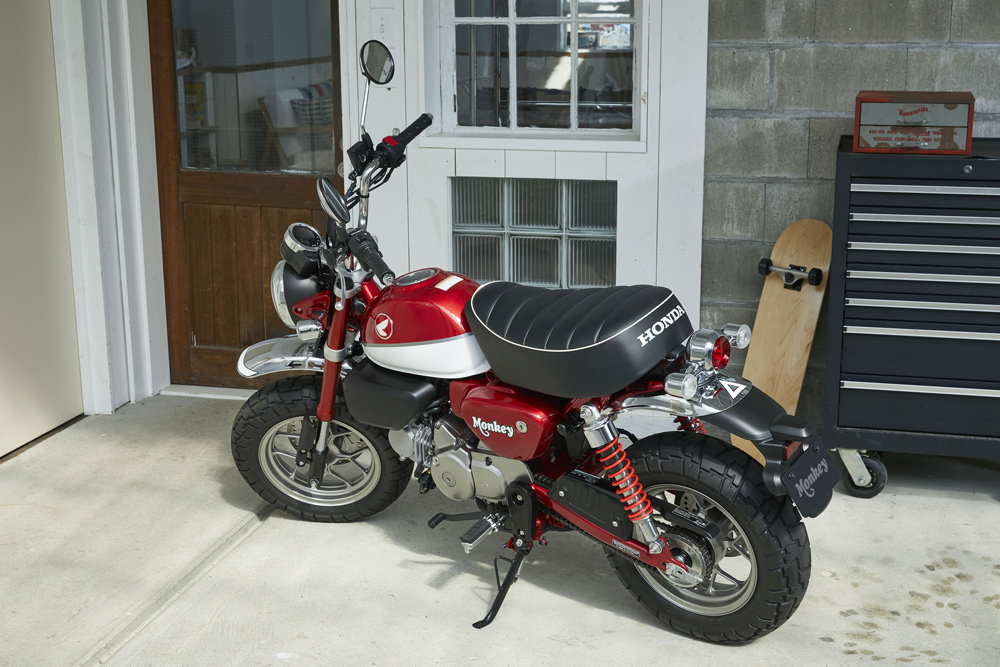
Part of what Honda is calling its miniMOTO segment, the 2019 Honda Monkey Bike is crafted using the insanely successful Honda Grom as its base. As such, the Monkey Bike gets the same basic 125cc single-cylinder, two-valve, four-stroke engine as the Grom, although changes have been made to the air intake system with a different airbox and fuel injection mapping. The Monkey Bike does get the same 31mm inverted fork (which is anodized to whatever color the bike is—cool), twin shocks, a twin piston caliper gripping a 220mm disc up front and a single piston caliper stomping on a 190mm disc out the back.
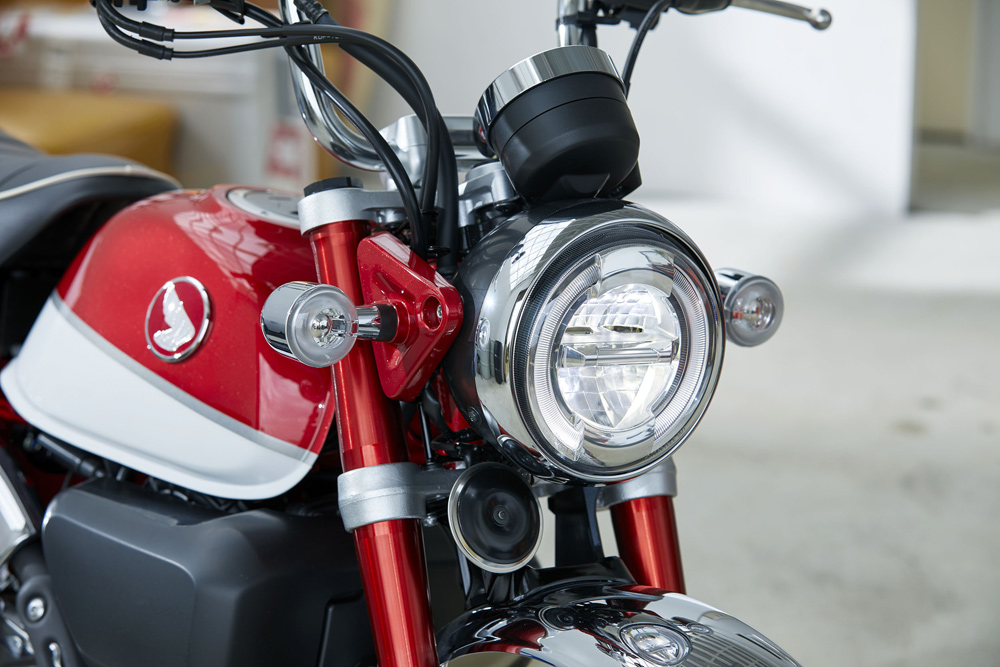
You can get an ABS or non-ABS version of the Monkey Bike, and the ABS version also comes with a single-channel Inertial Measurement Unit to help with that pesky problem of unwanted stoppies at the traffic lights (rear wheel lift mitigation). If, however, you’re like me and want that problem of being able to pull a stoppie at the lights, go for the non-ABS version.
As for the dash, it’s a far cry from what the original Monkey Bike had with a digital speedo, fuel gauge and dual trip meters. Combined with thoroughly modern LED lighting front and rear, the dash is a neat little piece that helps keep the fun factor of the Monkey Bike while giving you the info you need at a glance.
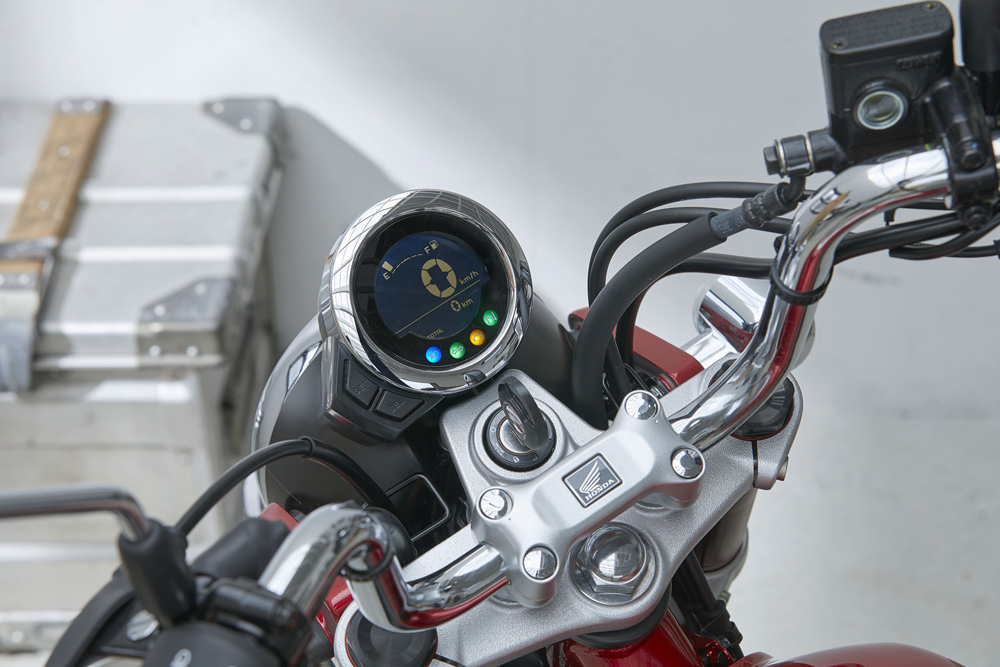
Mechanical specs aside, the Monkey Bike is more about looks than anything else. It’s a stubby, pudgy little thing, with a fat seat that can easily accommodate two riders, chrome steel front and rear fenders, and a 1.5-gallon tank sporting the charming “Old Wing” Honda logo, just to give you a kick of nostalgia square to the feel goods.
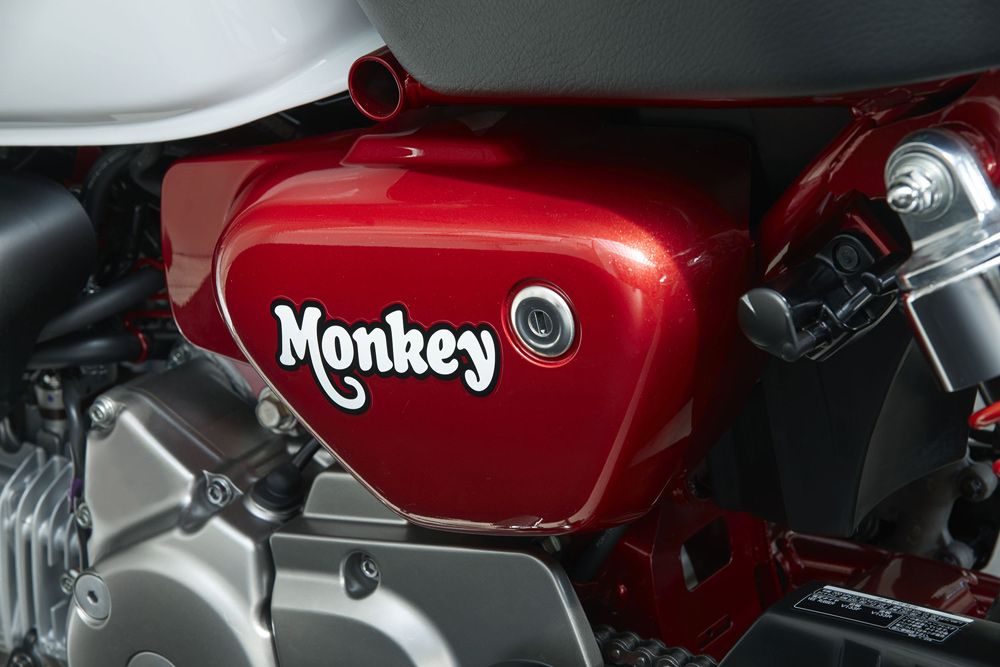
To see just how good that kick was, Honda took a few assembled journos to the Isle of Monkey for a quick ride dodging golf carts and boatloads of tourists. The Isle of Monkey, known to some as Catalina Island in California, thus became overrun with monkeys riding Monkey Bikes, as grown adults—some rather successfully—tried to party like it was 1968 all over again.
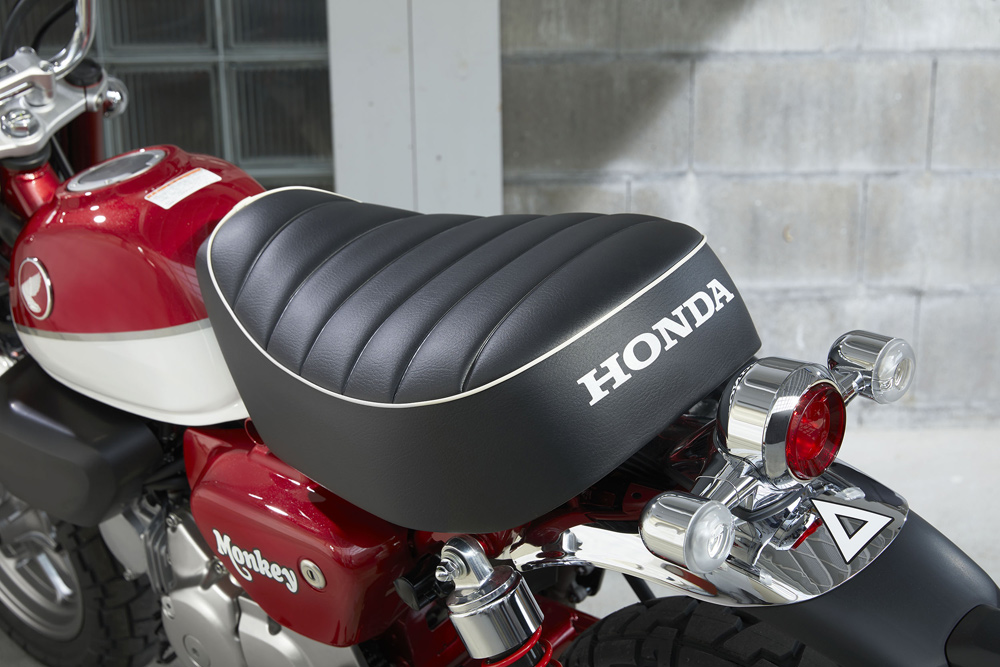
As for the Monkey Bike’s performance, it’s not going to blow you away. The Monkey Bike will finish last in almost any performance comparison of the current generation of minibikes like its brother in the Grom, Kawasaki Z125 Pro and Benelli TnT135. The suspension is very soft, the brakes are not fantastic, and the engine doesn’t have the same punch as what you’d expect considering it’s cut from the same cloth as the Grom.
Now for the good part. None of that matters.
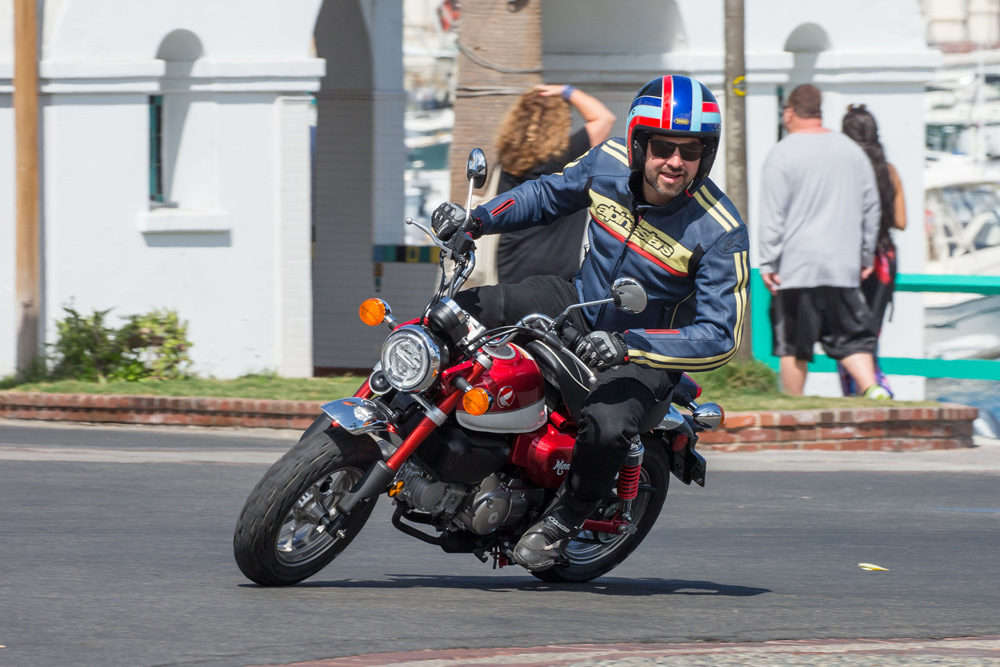
That’s because the Monkey Bike is all about giving you the kind of laugh you thought was long gone in modern motorcycling. All that stuff I said about the Monkey Bike’s performance, especially when compared to the Grom, is one of its charms. The lack of outright performance makes the Monkey Bike one of the most genuinely enjoyable bikes I’ve ridden for a long time. Yes, the suspension is soft, but it soaks up low speed bumps well, and with that massive seat, you’d have to be pretty picky if you found the ride uncomfortable. Yes, the motor doesn’t have the poke of the Grom (I rode one at the test back-to-back) due to the airbox changes but it’s got more than enough to keep a smile on your dial. And yes, you’ll get more looks on a Monkey Bike—and more people stopping you in the street to tell you how they had an OG Monkey Bike back in the day—than you could possibly imagine.
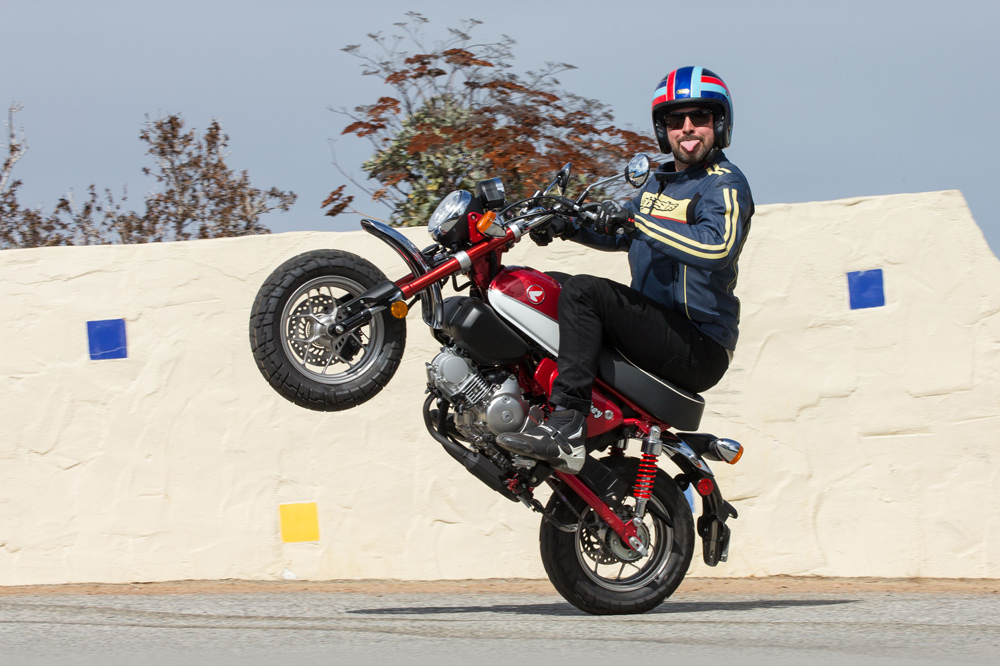
I have absolutely no idea how the Monkey Bike handles at high speed, nor do I have any idea about how fast it goes, because the Isle of Monkey doesn’t allow for excessively high speeds (especially while trying to dodge the golf carts of the residents). But if you’ve ever ridden a Grom, you’ll know you’re not going to take this bike on the freeway, but the Monkey Bike will be fast enough that getting around the local streets will be no problem.
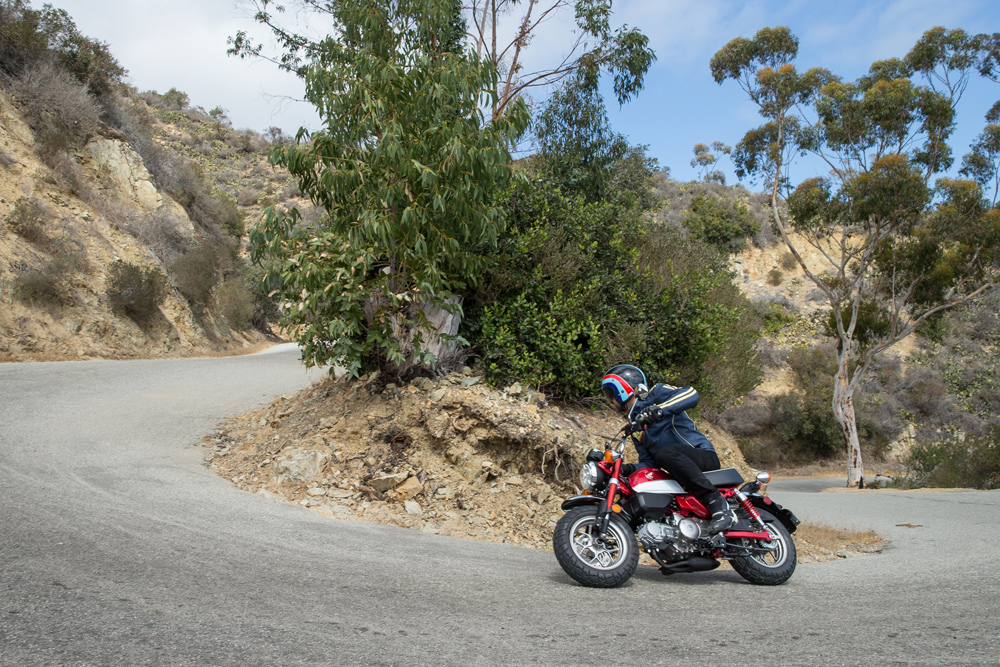
You get two colors with the Monkey Bike (Pearl Nebula Red or Banana Yellow), with the Red the only option that comes with ABS. But nostalgia comes at a price, and at $3999 for the base model and $4199 for the ABS version, the Monkey Bike isn’t what I’d call cheap. Nor is it likely to be the only bike you have in the shed because, let’s face it, the Monkey Bike isn’t exactly the most practical thing around.
But then, who cares? The Monkey Bike is the kind of bike everyone needs to ride, simply because it makes you feel good to be alive and riding a motorcycle.
VIDEO | 2019 Honda Monkey Bike
Monkey Evolution
OK—so how did we get here? Although the Monkey Bike is all new for 2019, the bike itself can trace its birth back 1961 and the Tama Tech amusement park in Tokyo that ran from 1961 through to 2009.
This was a Honda owned site, so jit gave the designers of Honda’s latest little people mover—the 49cc Z100—a perfect place to call home. The idea behind the Z100 was to introduce motorcycle riding to a whole new range of people and remember, Honda was only 13 years old at the time, so they could afford to be a little experimental.
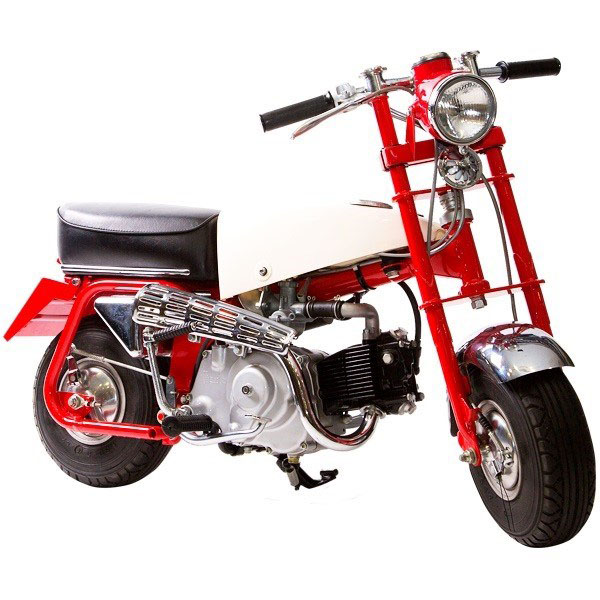
The Z100 was an absolute smash hit, earning the nickname Monkey Bike simply due to the shape riders cut while riding it. Such was the success that for 1964, we got the first production version in the CZ100 for Europe and Asia—but not the U.S.
We had to wait until 1968, when the bike that started a generation of humans on a lifelong two-wheeled track arrived in the Z50A. Essentially a shrunk dirt bike with front and rear lights, the Z50A had eight inch wheels wrapped in knobby tires, an adjustable seat, and styling that stole the hearts of a generation. You could even fold the handlebars down and put the Z50A in the truck to drive to your fav riding spot.
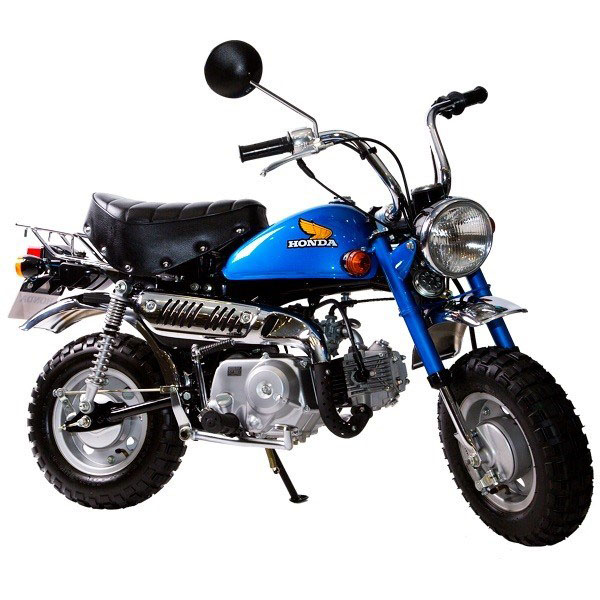
Over the years, the American Z50A evolved more and more into a junior off-road bike than a bike adults could act like kids on. Europe, meanwhile, got the Z50J, a bike more designed for quick trips around town than hitting the trails.
In 1987, we got what was essentially the Grom of its day with styling ripped from Honda’s road range, and in 1991 we even got a Monkey Bike Baja that looked like Honda’s Baja 1000 racers with two massive headlights.
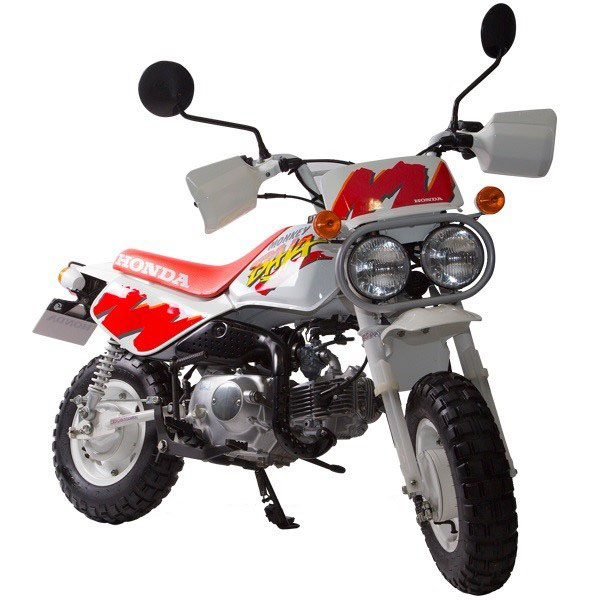
American Honda’s last official Monkey Bike was imported in 1998 in the ZB50, although the name “Honda Monkey Bike” has been continually used on 50cc bikes for the Japanese domestic market.CN

| SPECIFICATIONS | 2019 Honda Monkey Bike ($399/$4199 ABS) |
| Engine: | Air-cooled single-cylinder 4-stroke |
| Displacement: | 124.9cc |
| Bore x stroke: | 52.4 x 57.9mm |
| Fuel injection: | Electronic fuel injection system |
| Transmission: | 4-speed |
| Clutch: | Wet, multiplate |
| Chassis: | Steel trellis frame |
| Front suspension: | 31mm hydraulic telescopic inverted fork |
| Rear suspension: | Twin shocks |
| Front wheel travel: | 4.3 in. |
| Rear wheel travel: | 3.3 in. |
| Front brake: | Single 220mm disc with two-piston caliper; ABS |
| Rear brake: | Single 190mm disc with single-piston caliper |
| Front tire: | 120/80-12 in. |
| Rear tire: | 130/80-12 in. |
| Wheelbase: | 46.5 in. |
| Seat height: | 30.6 in. |
| Fuel capacity: | 1.5 gal. |
| Weight: | 236 lbs. ABS/232 lbs. non-ABS |
| Colors: | Pearl Nebula Red, or Banana Yellow |
Click here to read this in the Cycle News Digital Edition Magazine.
Click here for more Honda motorcycle reviews and news.
